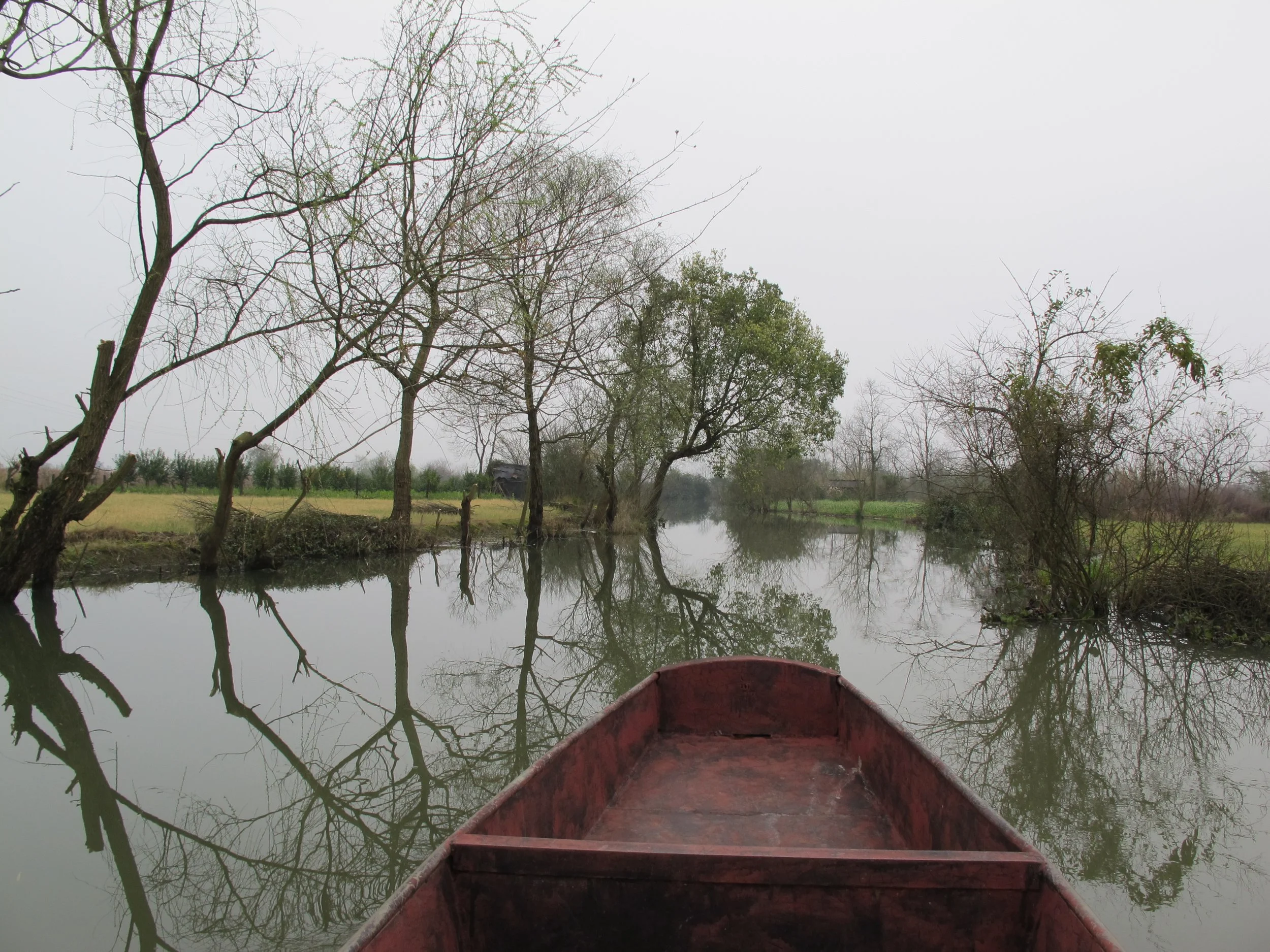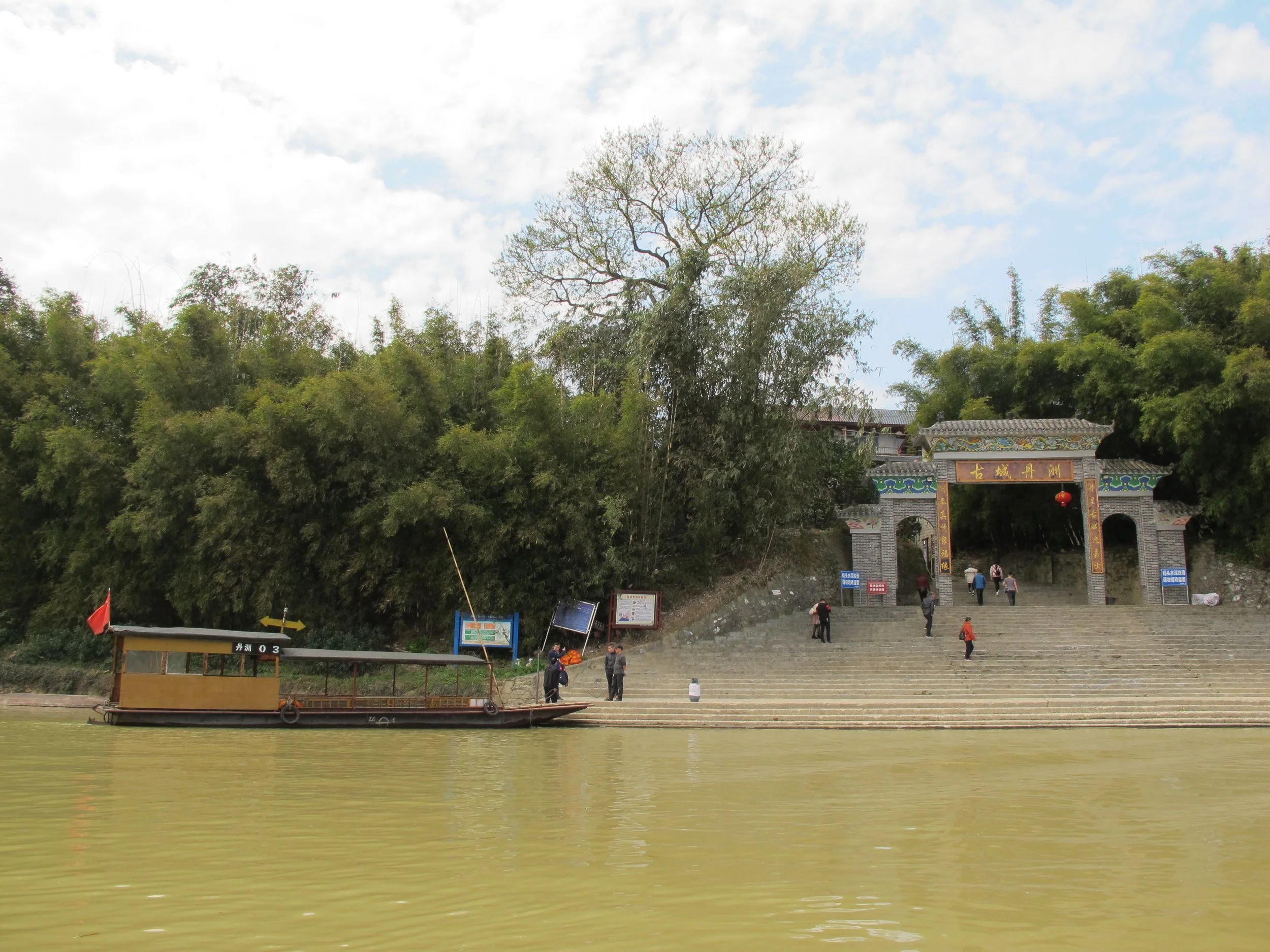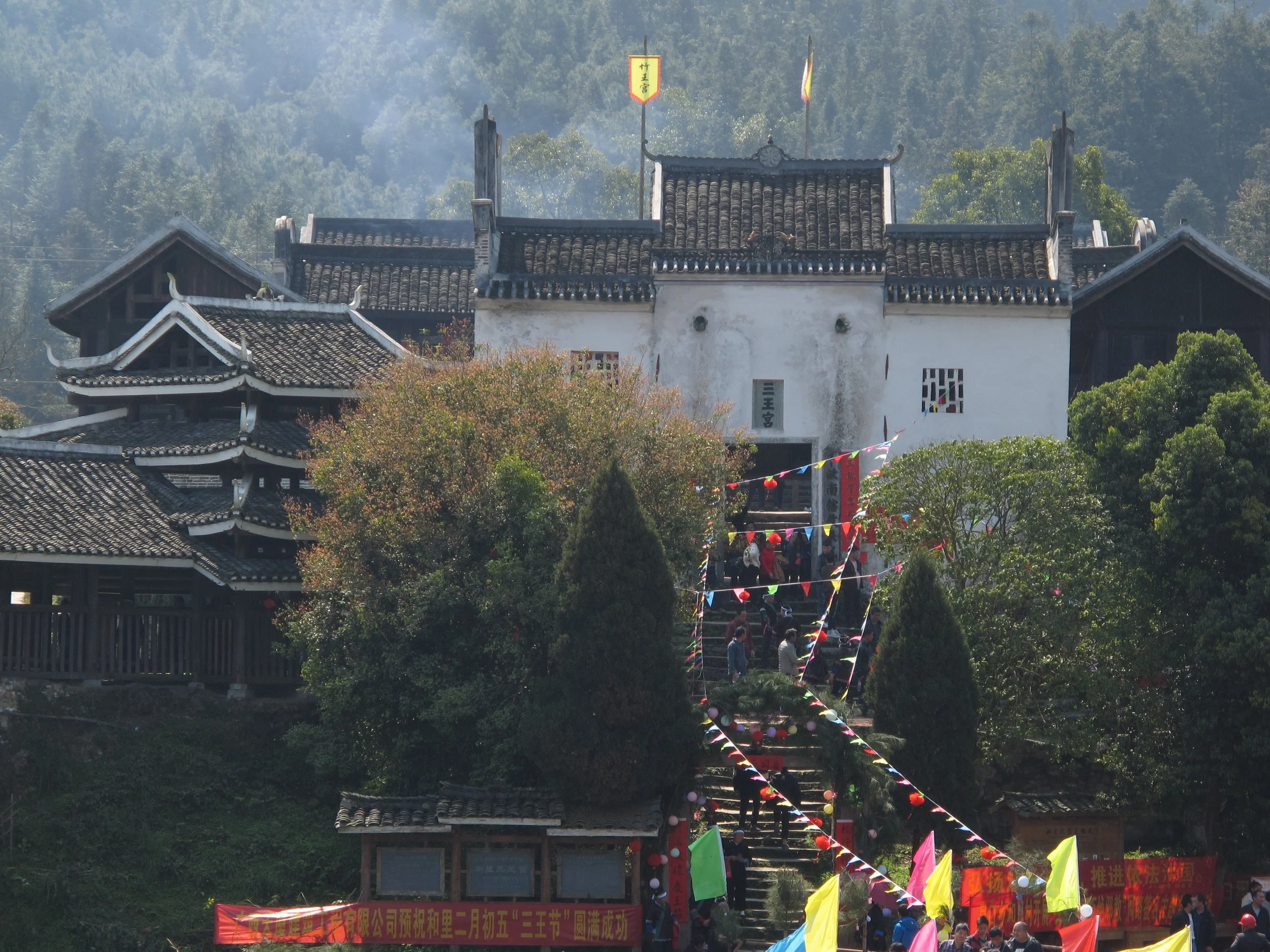Across Guangxi By Boat
In March 1879, after spending nearly two years on the road between China and Europe, Mesny left the southern metropolis of Guangzhou to head home to his wife in Guizhou province, a journey of perhaps 1000km. Renting a roomy daobazi (刀把子) or “knife-handle” houseboat, named after the shape of their sterns, Mesny followed the Xi river to Wuzhou before turning north up the Li river to Guilin – famous then, as now, for its landscape of pointy karst mountains – which he reached in June.
After a hostile reception at Guilin, Mesny cruised west through the Gui-Liu canal (古桂柳运河) linking the Li and Rong rivers, which shortened the voyage between Guilin and Liuzhou to just 300km; the alternative was to backtrack to Wuzhou and then follow the Xi river, a total of 750km.
Originally constructed around 700AD, the Gui-Liu canal featured eleven stone bridges and over twenty locks. Transport aside, it also helped regulate local irrigation and control flooding, but maintenance was sporadic and by Mesny’s time it was barely navigable.
“[Our pilot] managed to conduct us safely into the mouth of a very small canal, fitted with a number of very primitive looking locks, through which we just passed, scraping the sides of the junk as we went… The canal itself being a miserable little gutter-like arrangement winding in and out amongst lime-stone boulders strewn about the plain, and connecting the few ponds formed amongst the rocks.
Limestone peaks are visible in all directions, and lend a beauty to the landscape which is pleasant to behold. … The locks were attended to by the neighbouring villagers, some of whom get a yearly allowance of rice for attending to this work [and are also] allowed to collect a small fee from passing boats on private business.
There are several bridges across the canal which are very low so that we passed under them with nothing to spare. At the last one we were obliged to discharge all the baggage and scuttle the junk to allow of her passing under the arch without demolishing the deck house. At the other bridges I had persuaded a lot of countrymen to come on board and by their weight had put the junk low enough down to pass under without trouble.”
Two weeks later, and by now travelling in a smaller, shallow-draft vessel, Mesny docked briefly at the mid-river island town of Danzhou (丹洲, then Huaiyuan Xian, 懐逺縣) in northern Guangxi. Mesny was offended when the magistrate refused to meet him, and instead spent an hour ogling ethnic minority women before resuming his journey:
“At 3 p.m. we reached the dull little county town of Huaiyuan Xian, the last city we pass in Guangxi before entering Guizhou. Members of the various tribes of Miao, Yao, Zhuang and Dong come down from their mountain homes to get employment here, and to trade…
Amongst the crowd ashore was a fine young girl from 12 to 13 years old, with nice looking features and splendidly formed limbs, her arms and legs being bare, she walked in the water and came quite close to the boat to have a good look at me. She was the whitest and prettiest female that I had yet seen this side of Guangzhou, and she was far from timid. I also saw two women with short skirts like kilts, they wore no drawers but they had some calico bands wound about their legs well up to the crutch. They also wore large plain silver earrings in their ears and they were far from pretty.”
The next day Mesny pulled in for the evening near Sanwang Gong (三王宫), the Three Kings’ Palace, near the Guangxi–Guizhou border. This small temple with mildewed, whitewashed walls was founded during the sixteenth century in memory of the three sons of King Zhu of Yelang State, who died fighting emperor Wu’s forces in 111BC and are now hailed as folk heroes by the region’s Dong people.
“[And so on 1 July] we moved off and entered the Yong River [and] came to for the night near the San Wang Gong … a small temple occupied by a company of play actors and a few scholars; two of the latter brought me a stool to sit upon, and addressed me as Aged Sir. I asked them their honourable names and for their tutor’s. They gave me their names and pointed to a person on the stage in a dirty garb who was slipshod as their tutor. He proved to be well informed about foreign countries and their intercourse with China, and a thorough gentleman in manners if not in appearance. He bade me welcome to this distant region.
Two rowdy looking individuals who had been abusing [my travelling companion] Hu Pin on the other side of the river came in and ascended the stage on which we were sitting. One of them wound his queue about his head as a mark of disrespect; the teacher looked at him rather reprovingly, so did most of the other people present, they having put down their queues as a mark of respect on my arrival. The insolent fellow finding no encouragement and probably fearing a mauling went off. I thereupon thanked the teacher and his pupils for their entertainment and went off to the boat. They invited me to return whenever I felt disposed to do so.
I felt anything but respectable, my dress being wet with perspiration and my waterproof helmet emitted an offensive smell of vulcanized India rubber.”





